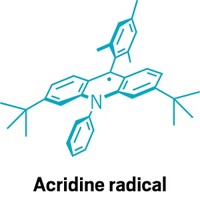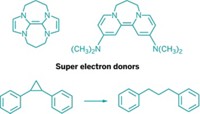Advertisement
Grab your lab coat. Let's get started
Welcome!
Welcome!
Create an account below to get 6 C&EN articles per month, receive newsletters and more - all free.
It seems this is your first time logging in online. Please enter the following information to continue.
As an ACS member you automatically get access to this site. All we need is few more details to create your reading experience.
Not you? Sign in with a different account.
Not you? Sign in with a different account.
ERROR 1
ERROR 1
ERROR 2
ERROR 2
ERROR 2
ERROR 2
ERROR 2
Password and Confirm password must match.
If you have an ACS member number, please enter it here so we can link this account to your membership. (optional)
ERROR 2
ACS values your privacy. By submitting your information, you are gaining access to C&EN and subscribing to our weekly newsletter. We use the information you provide to make your reading experience better, and we will never sell your data to third party members.
Synthesis
Organic Reducing Agent Sets New Record
Electron Donors: Bispyridinylidene has the highest known redox potential for a neutral organic molecule, rivaling alkali metals
by Stephen K. Ritter
August 17, 2015
| A version of this story appeared in
Volume 93, Issue 32
Organic electron donors with exceptionally negative redox potentials have emerged as new reagents in organic synthesis to complement traditional metal-based reducing agents. Chemists led by John A. Murphy of the University of Strathclyde, in Scotland, and C. Adam Dyker of the University of New Brunswick, in Canada, have pushed this class of compounds to a new level by designing and synthesizing a substituted bispyridinylidene that is the first reagent strong enough to reduce recalcitrant sulfonamides and malononitriles without additional light-driven photoexcitation (Angew. Chem. Int. Ed. 2015, DOI: 10.1002/anie.201505378). The molecule features four strongly π-donating iminophosphorano substituents on the bispyridinylidene skeleton. It has a record redox potential of –1.70 V versus a saturated calomel electrode, surpassing the previous record by about 0.2 V. The team can isolate the compound but found that it can be conveniently generated in situ for multigram-scale reactions. The researchers show that the two-electron donor is capable of reducing aryl halides to arenes. They also found that it’s effective in reductive S–N bond cleavage of arenesulfonamides, an important step in removing tosyl protecting groups during multistep syntheses. The reagent also can remove cyano groups from malononitriles to form mononitriles, a process that usually requires toxic tributyltin hydride and the radical initiator AIBN.






Join the conversation
Contact the reporter
Submit a Letter to the Editor for publication
Engage with us on Twitter